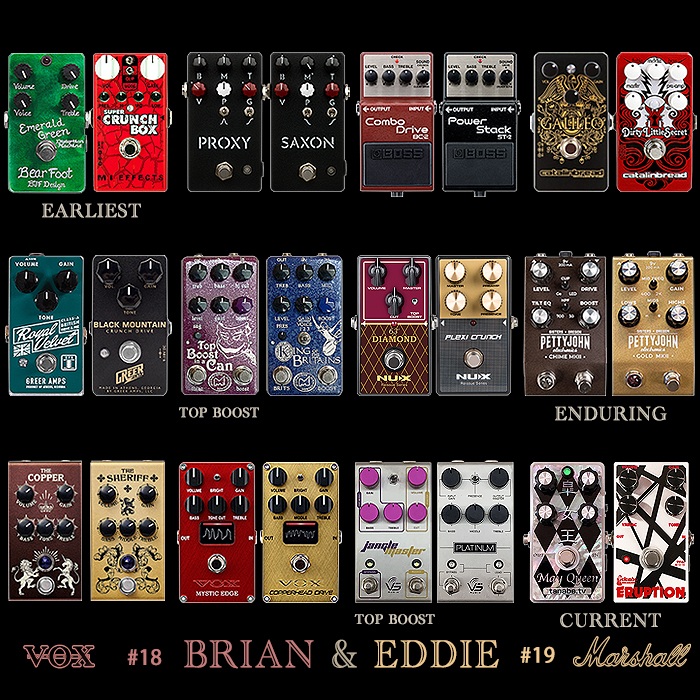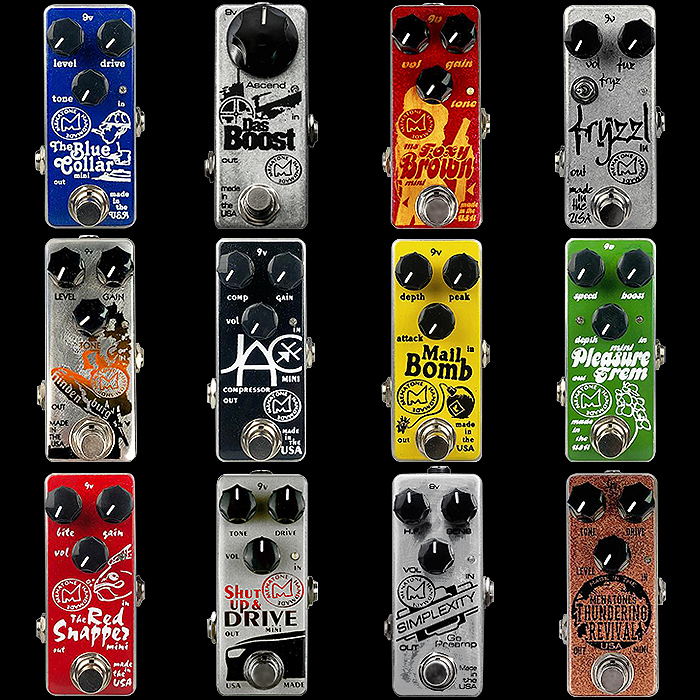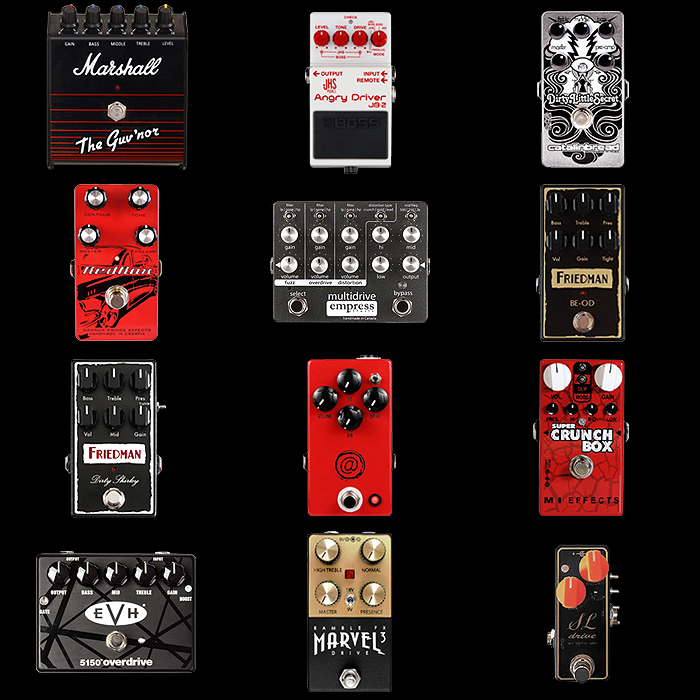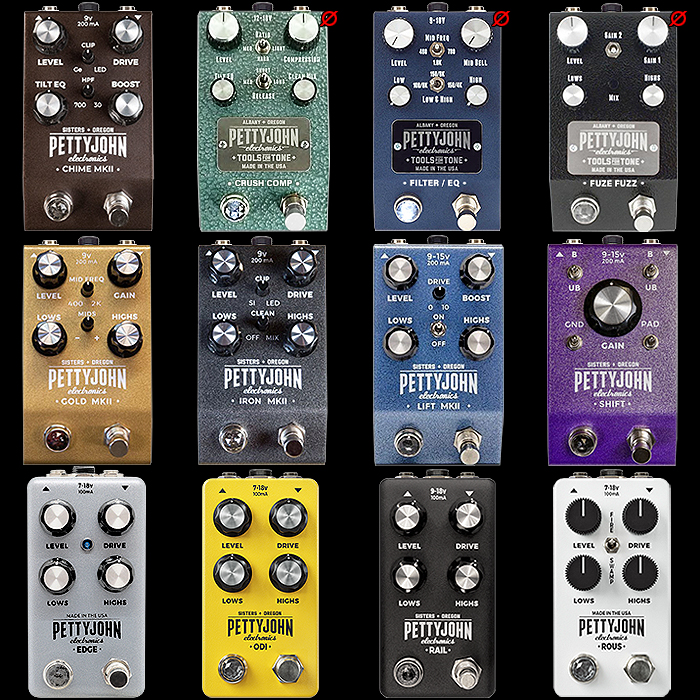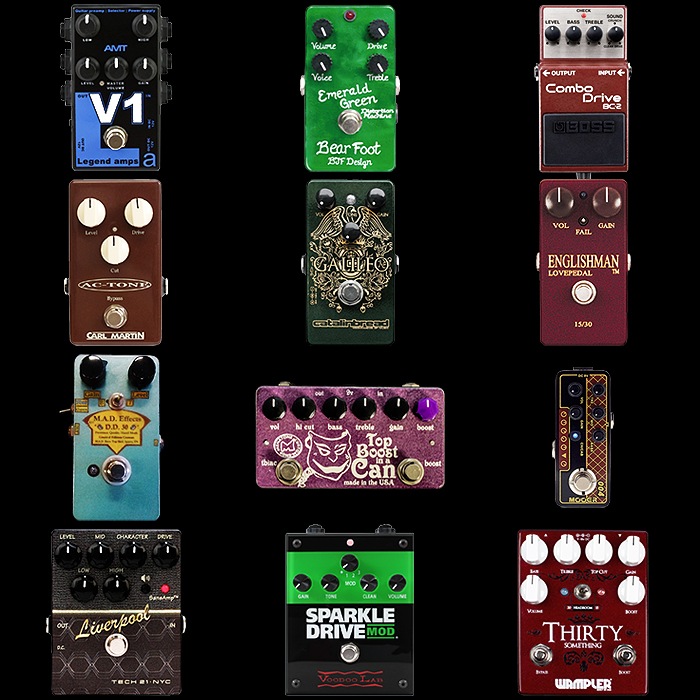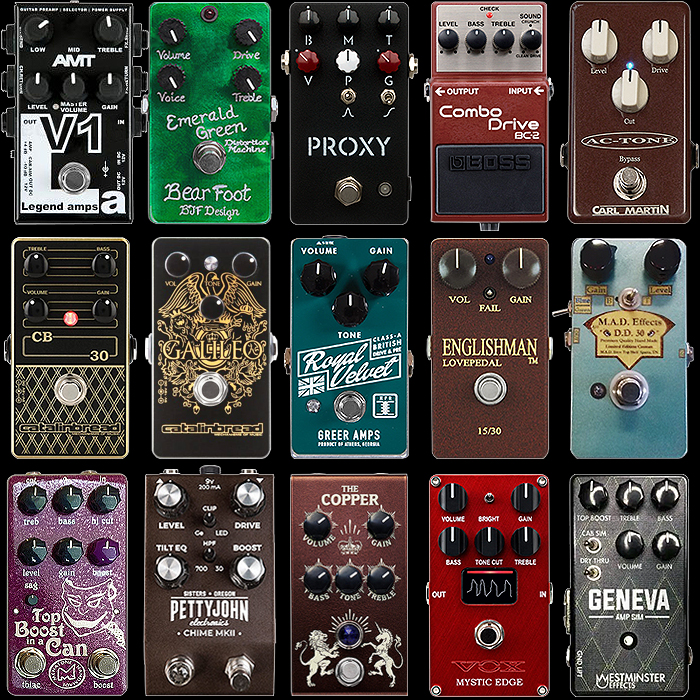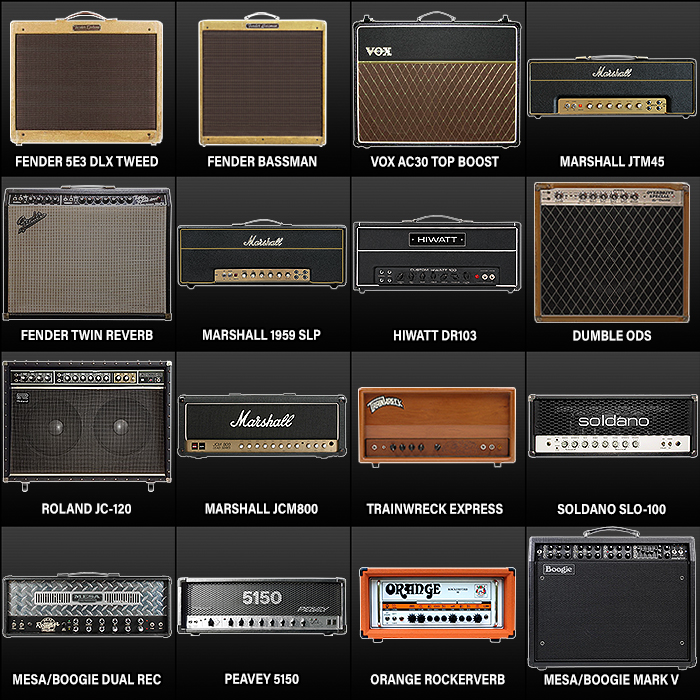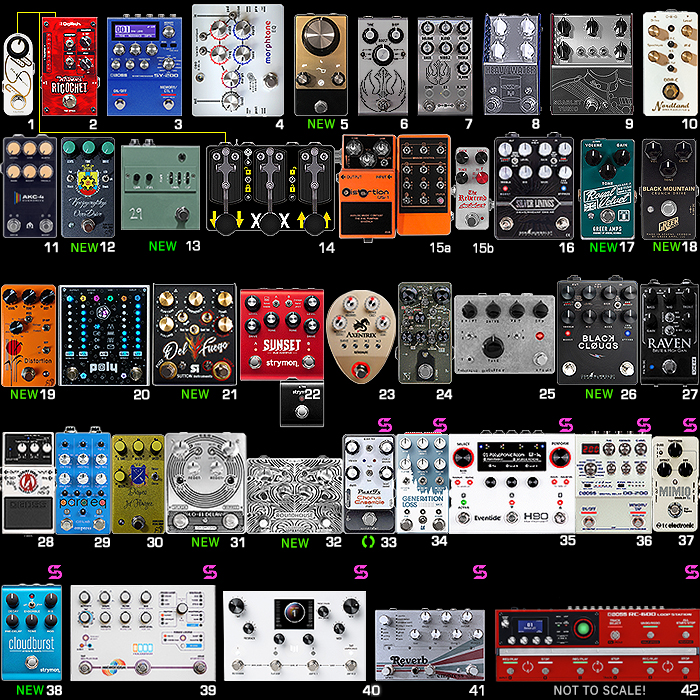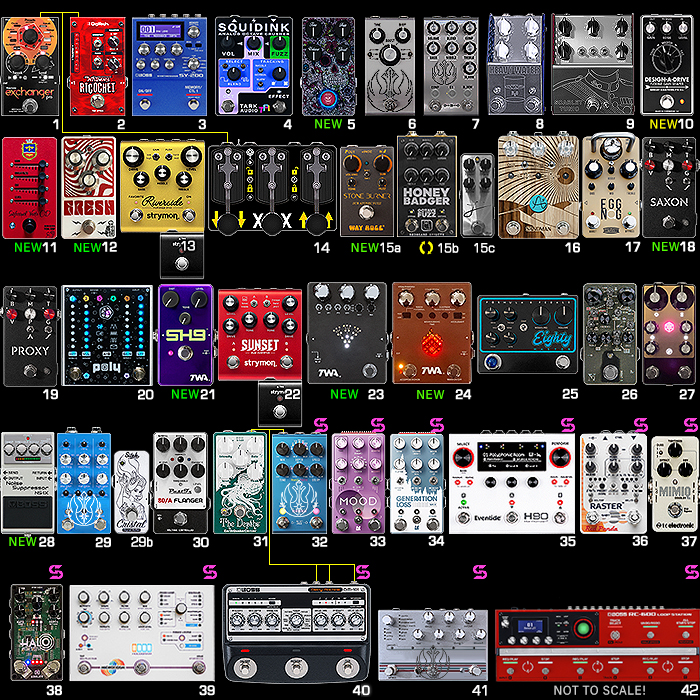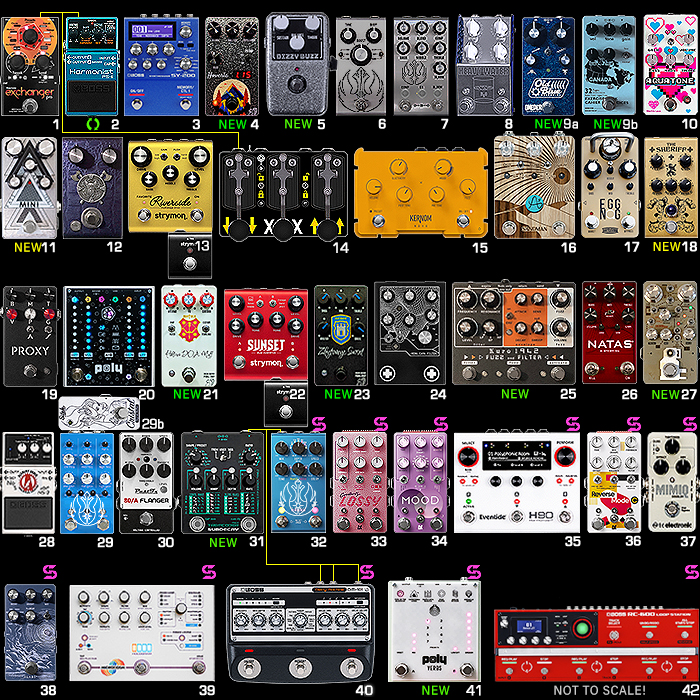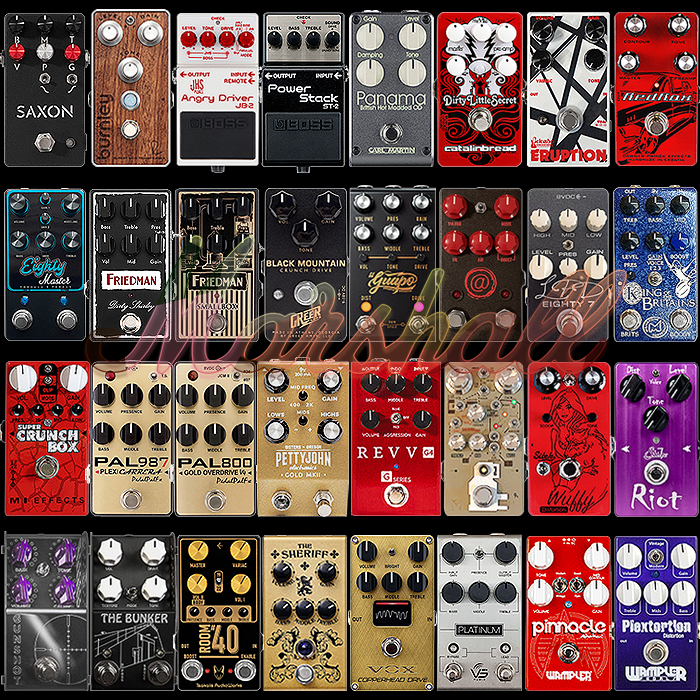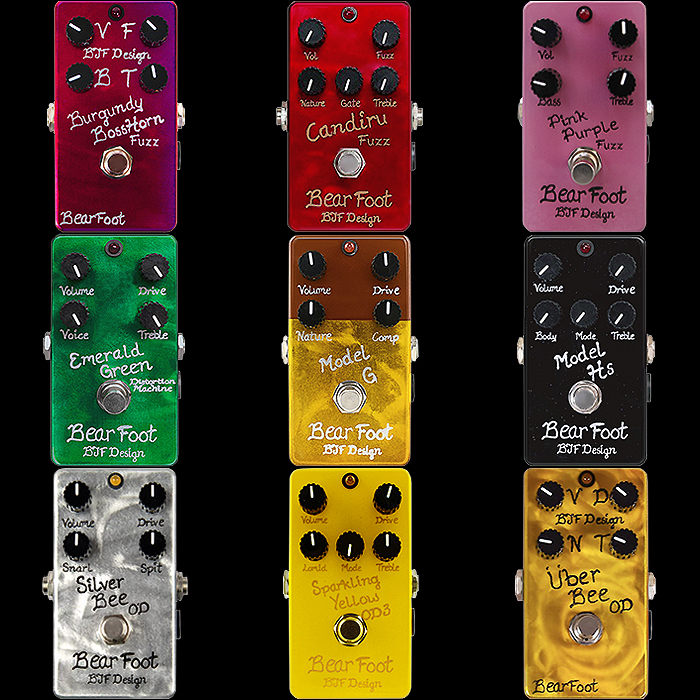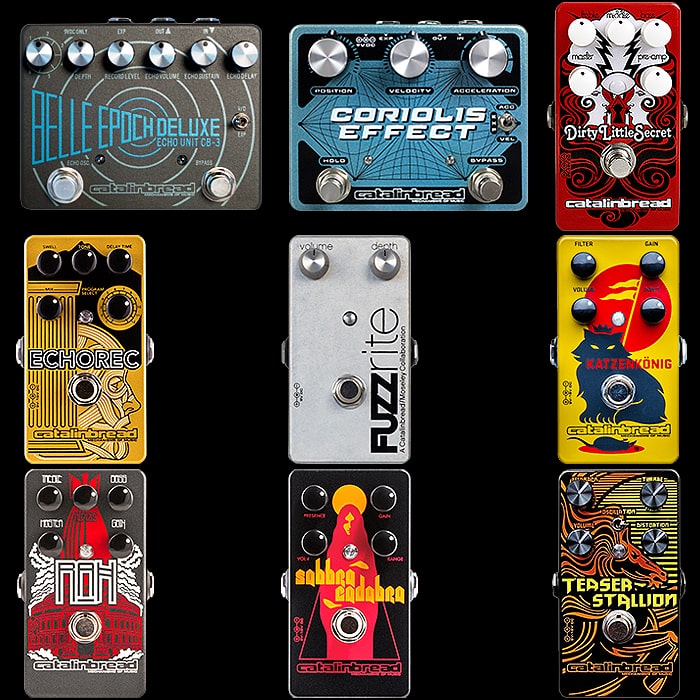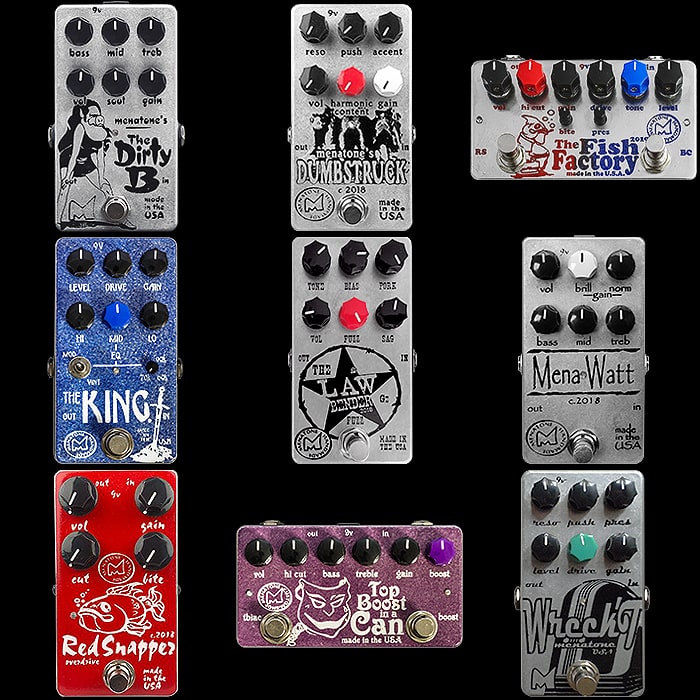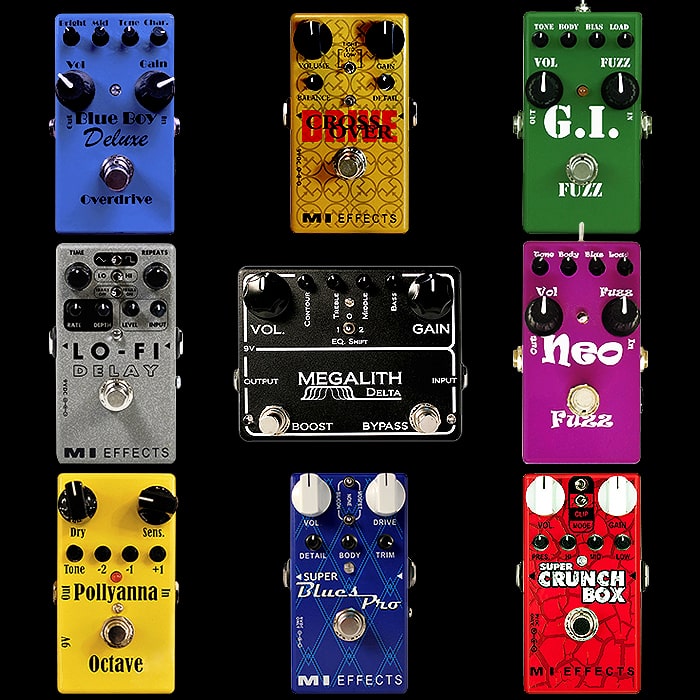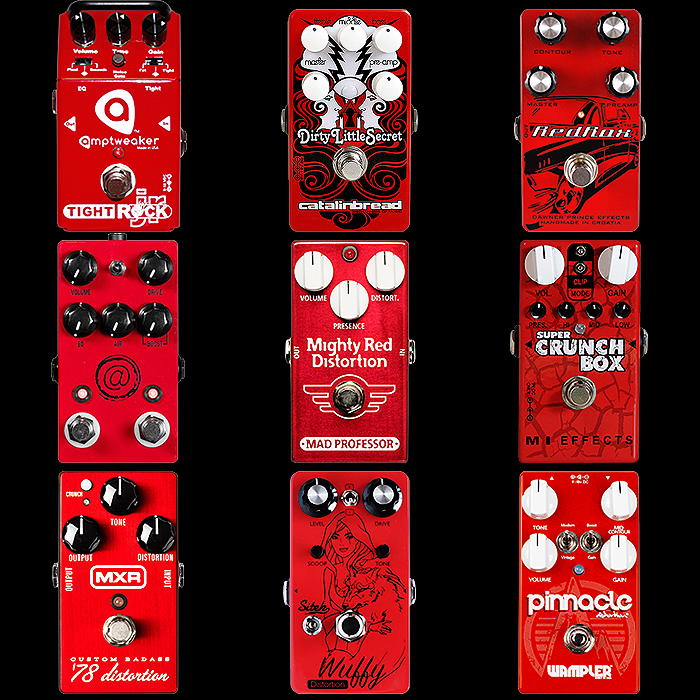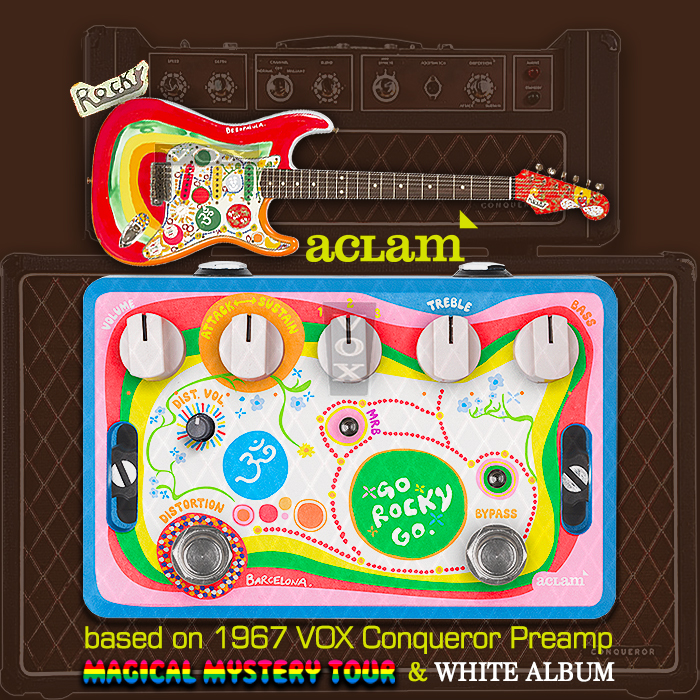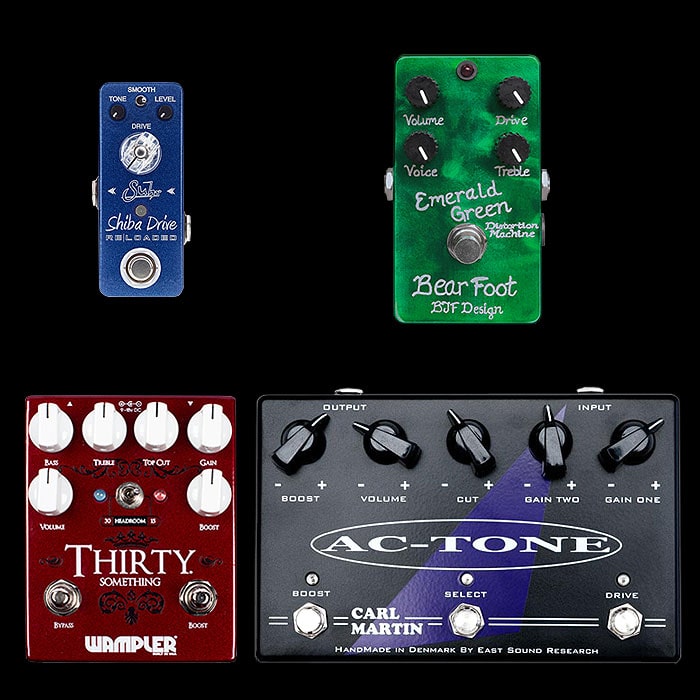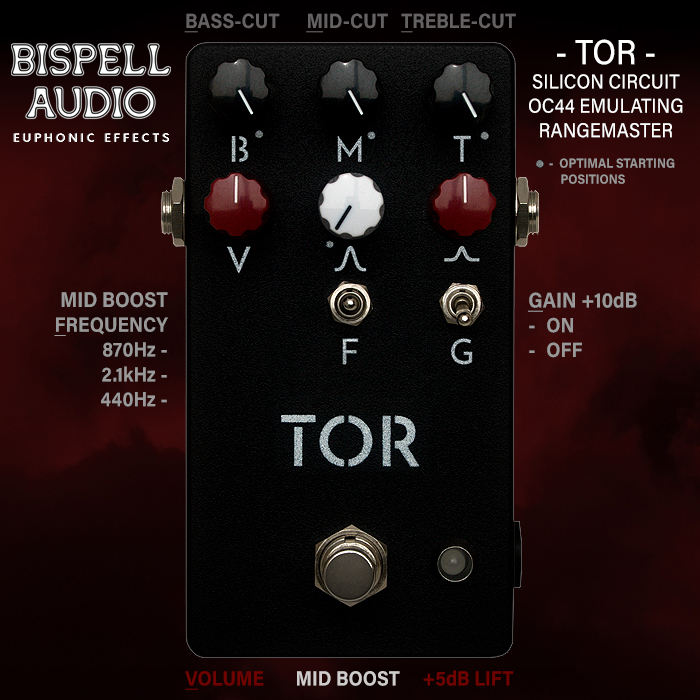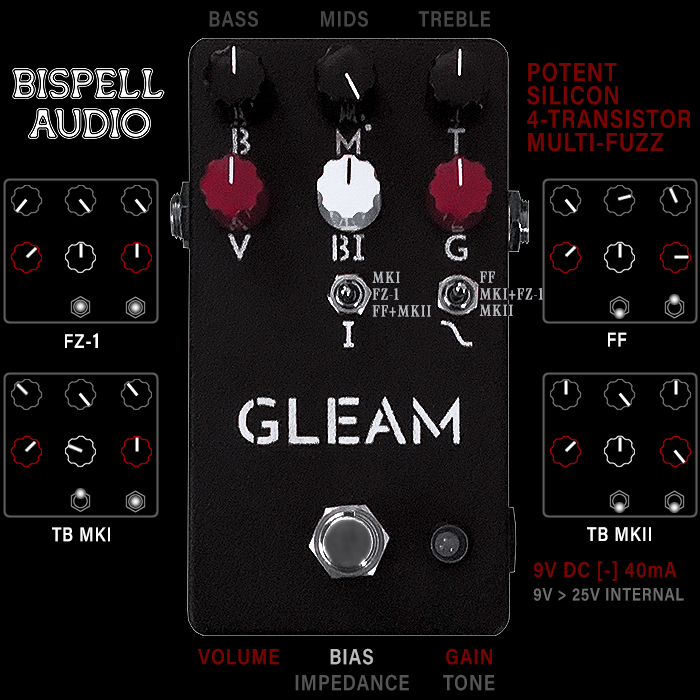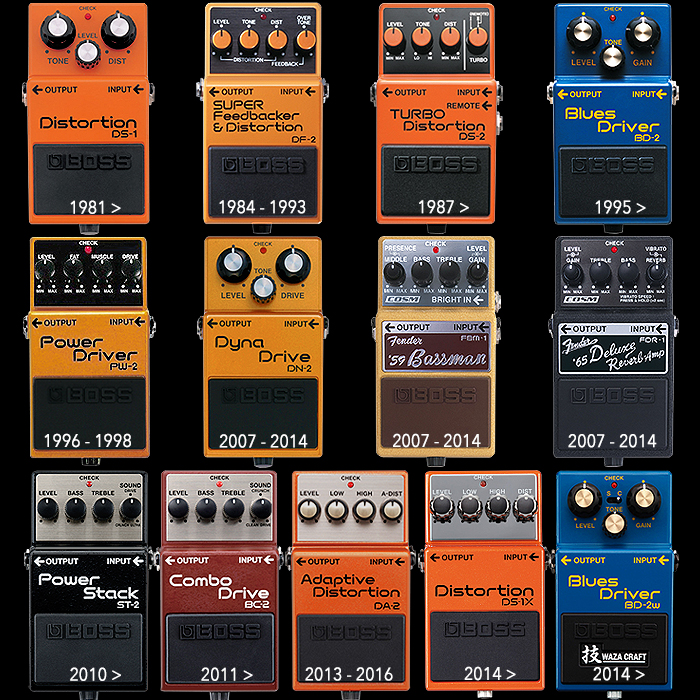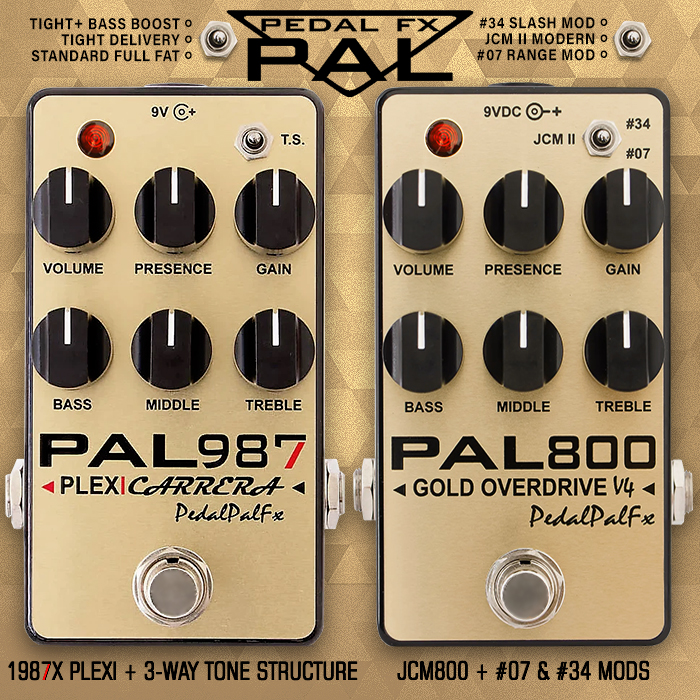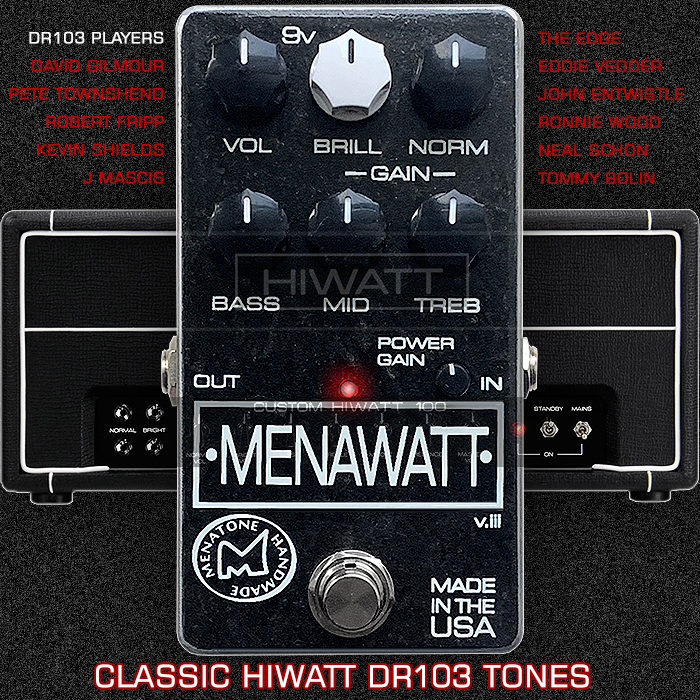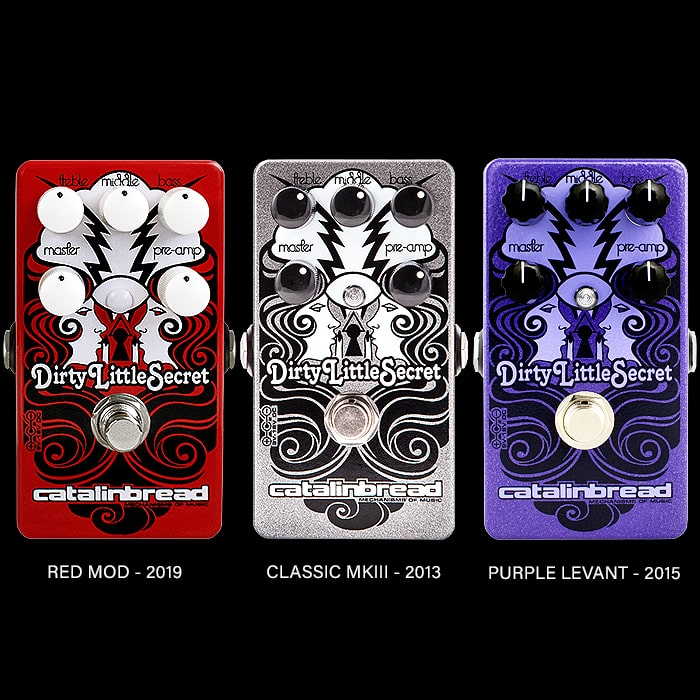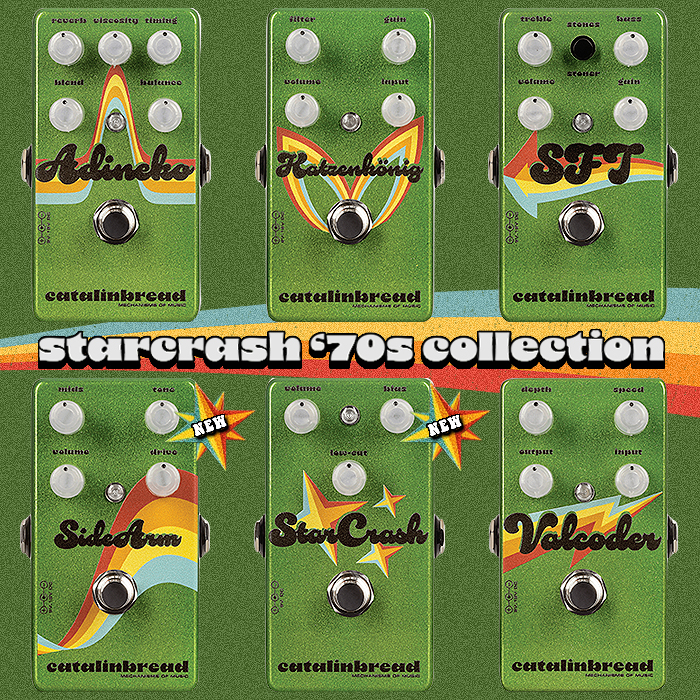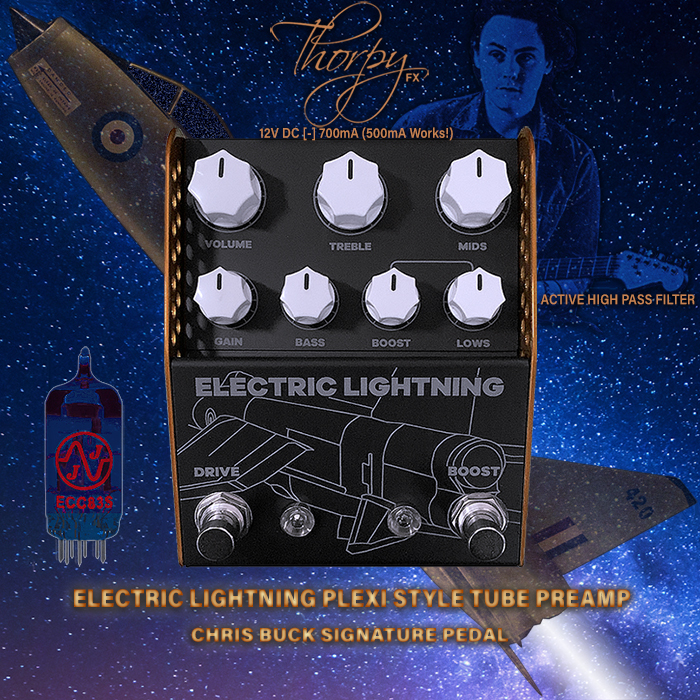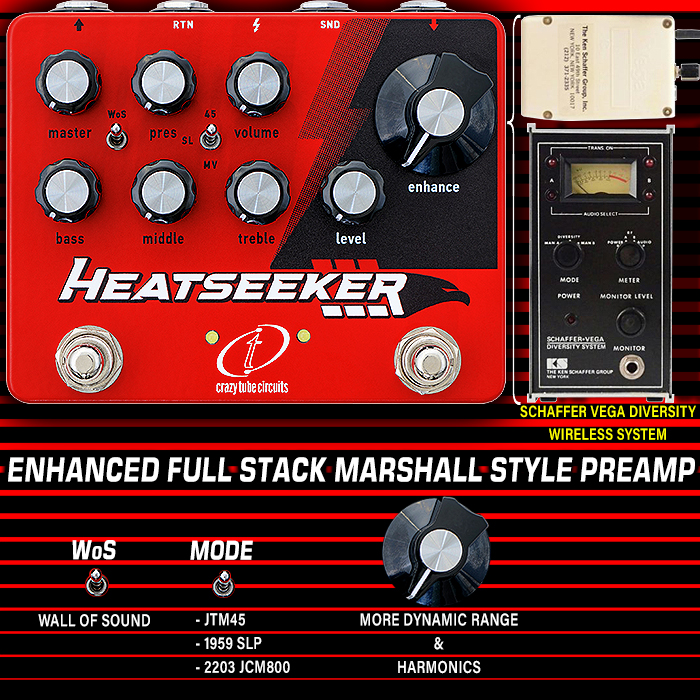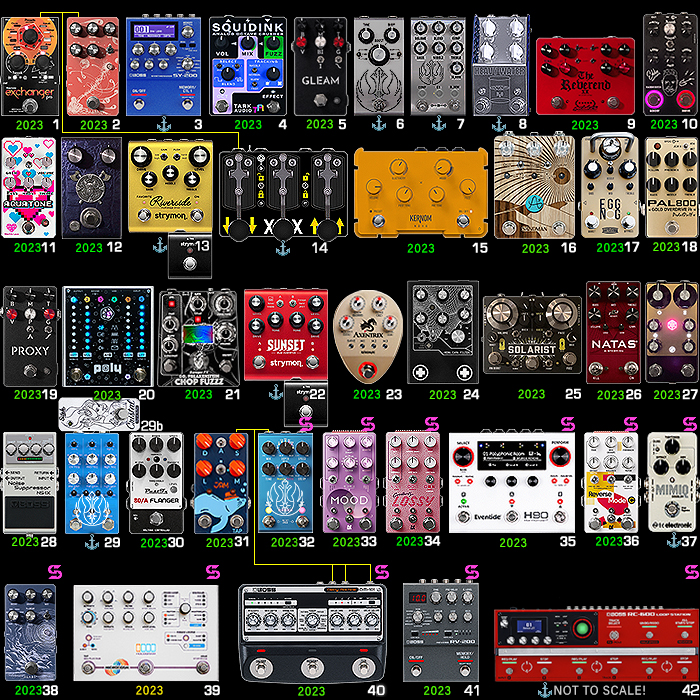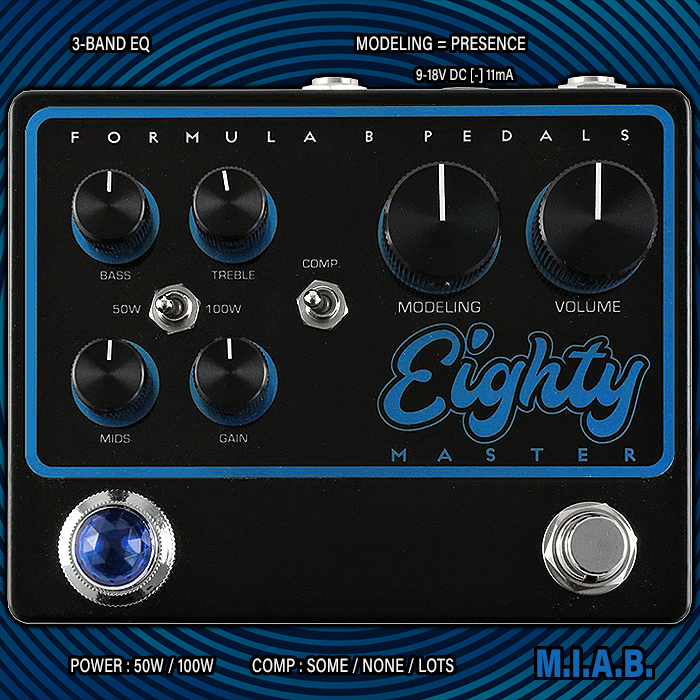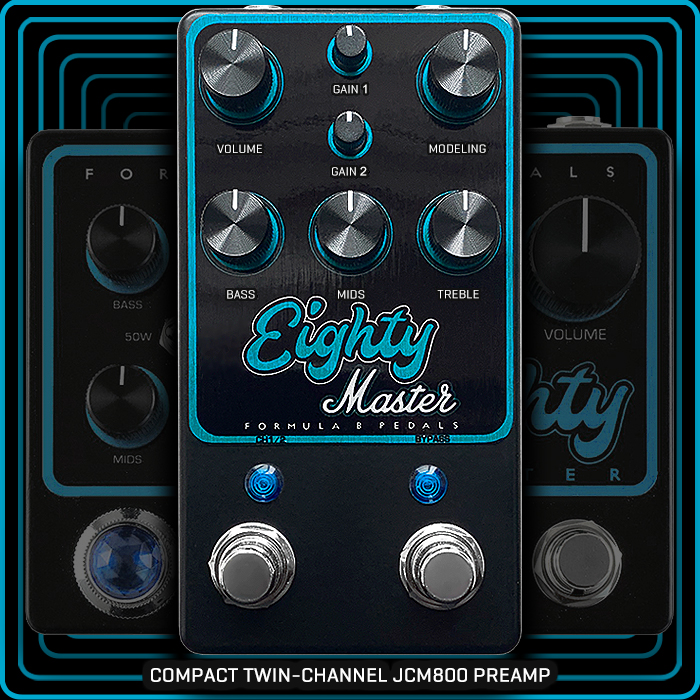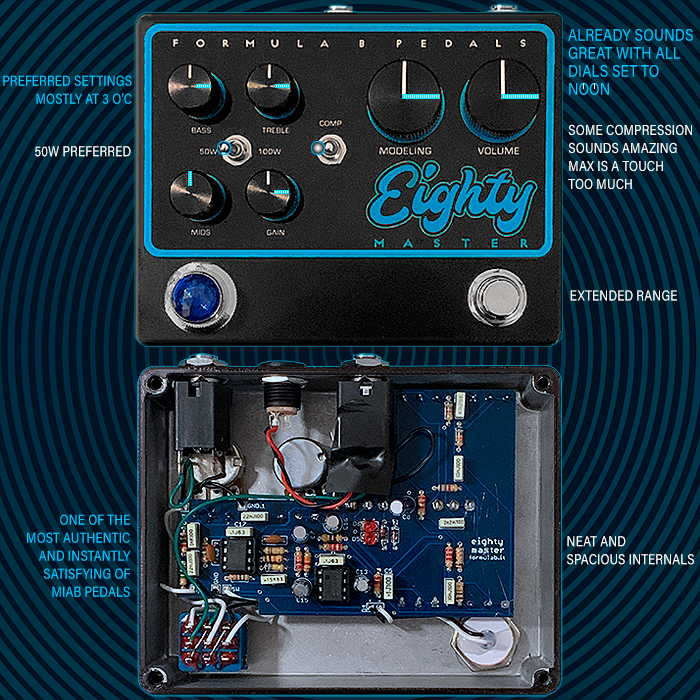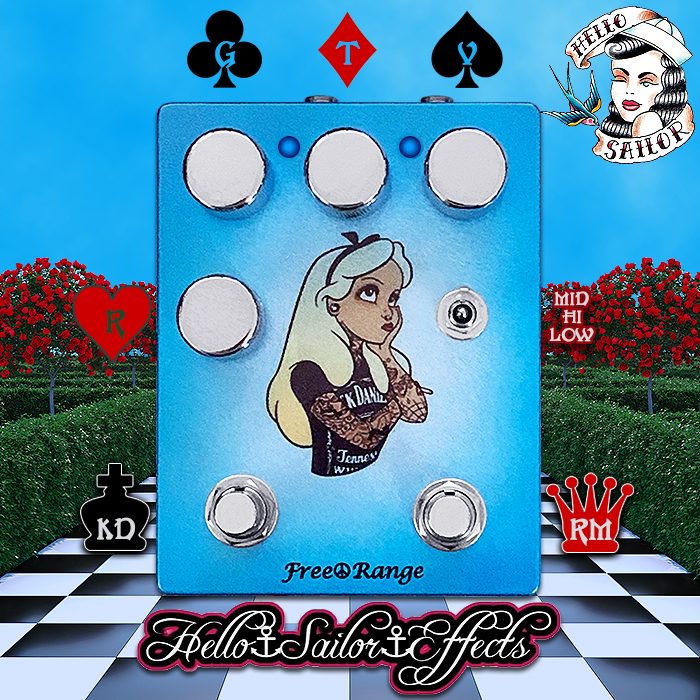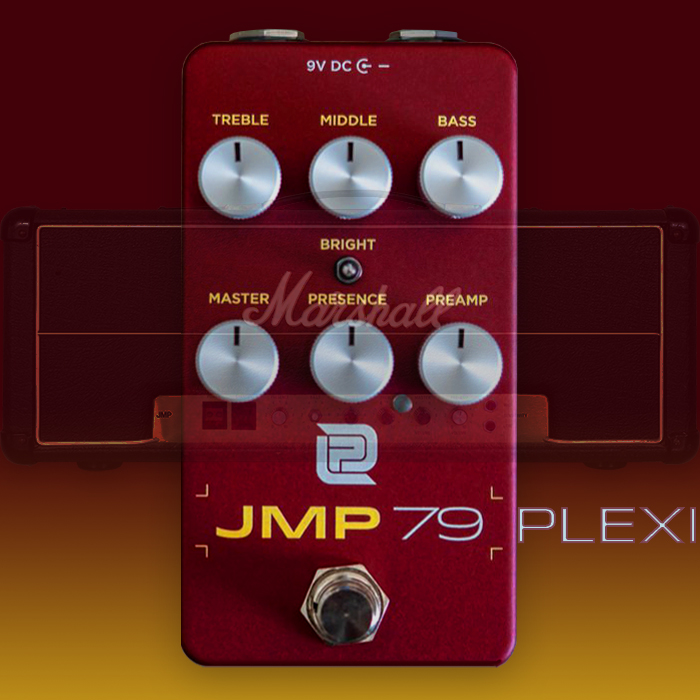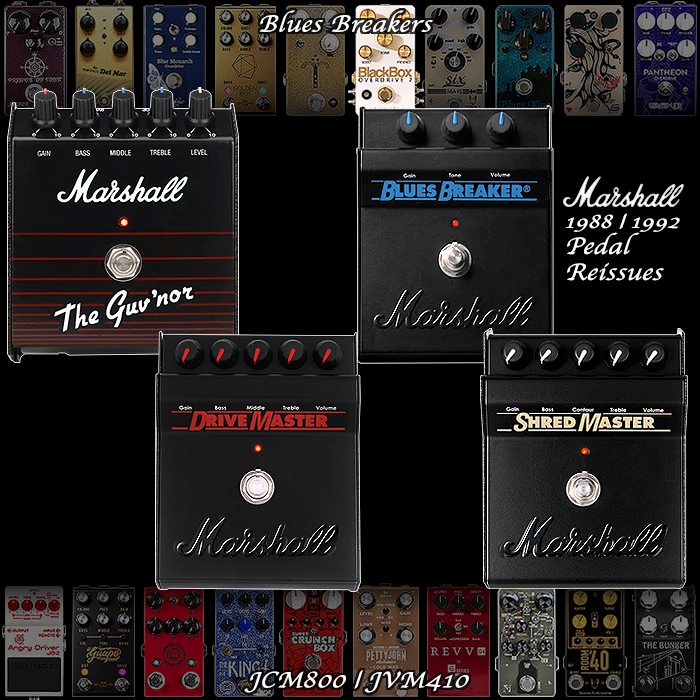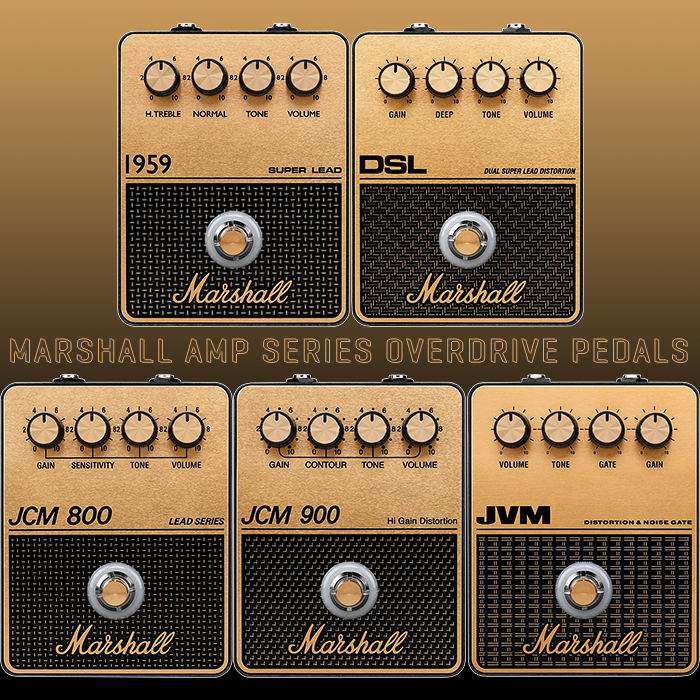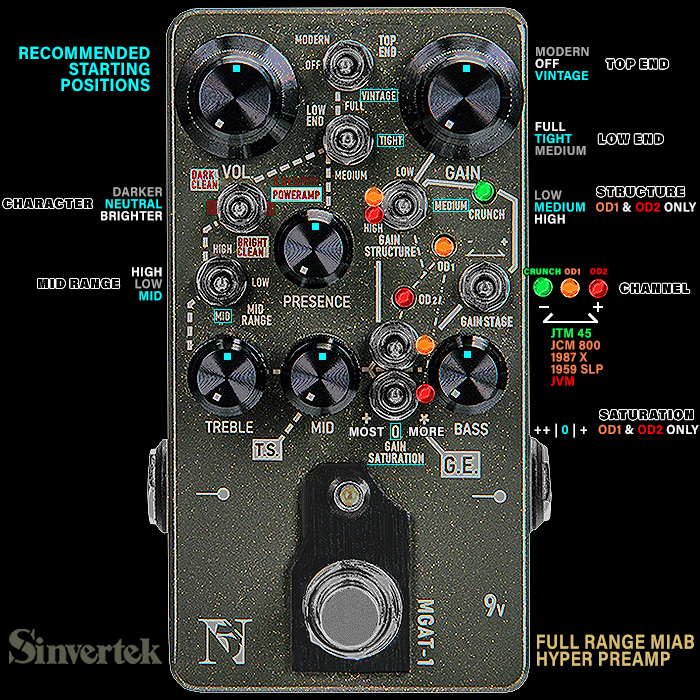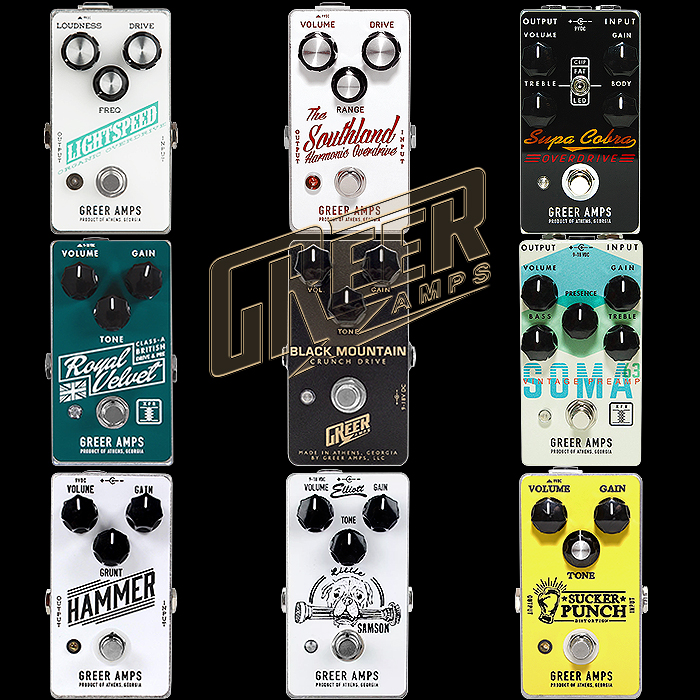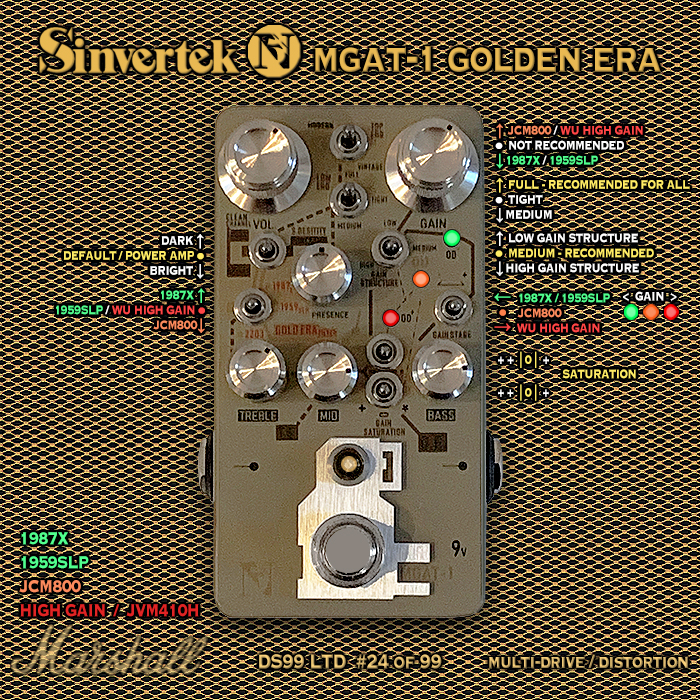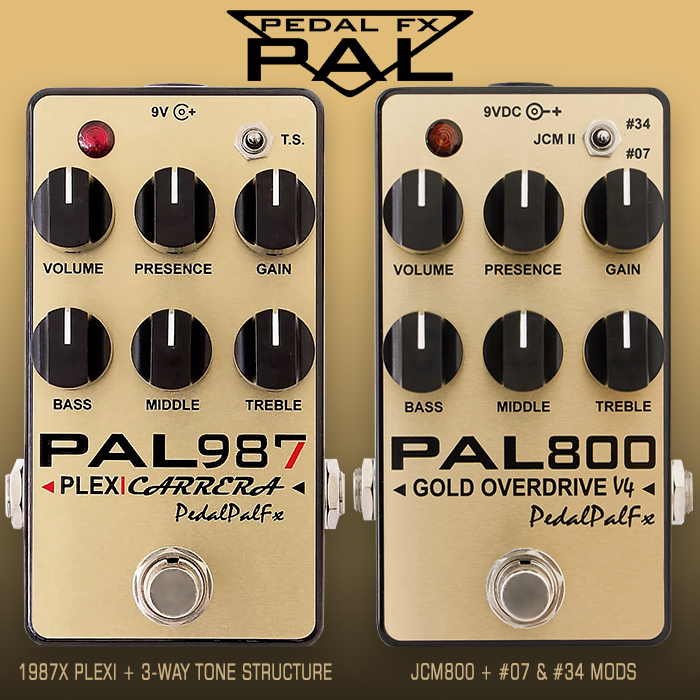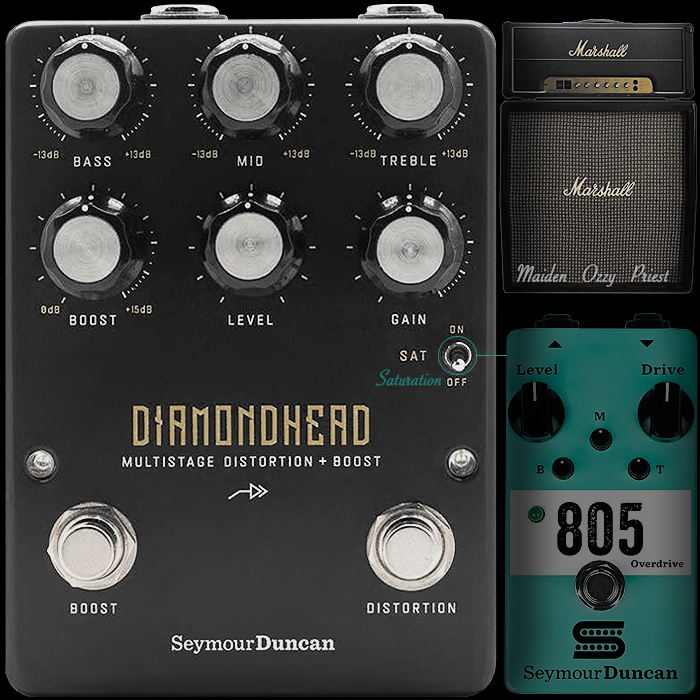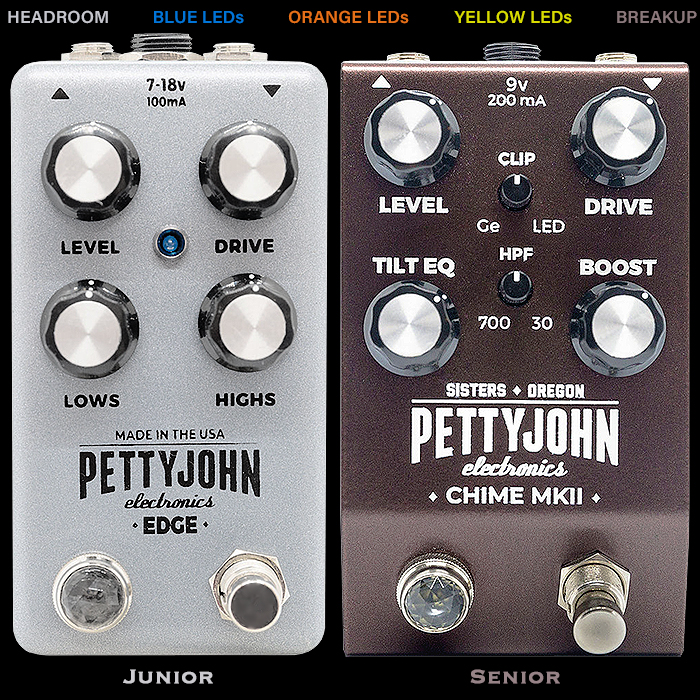9 cool pairs of Vox-in-a-Box and Marshall Plexi style Pedals which have, or are about to fill slots #17 and #18

Readers of this blog will know that I’ve long and consistently had 2 key pedal types in my pedal-chain - namely a Brian May Vox style pedal, and an Eddie Van Halen Marshall Plexi style pedal - which for the last number of years have populated slots #17 and #18.
My very first pairing was the hybrid set of Bearfoot FX EGDM and MI Effects Super Crunch Box V2 - which overall probably served the longest innings on those two slots.
Since that first pairing we’ve had matched brand pairs - from Boss, Catalinbread, Menatone, PettyJohn and Greer Amps (current), with the Bispell Audio pair due to go on this month.
Next it will be the turn of the Victory pair, and then finally the Vox NuTube pairing - some stage later this year. After which time I will decide which pair should take over more permanently.
After the initial pairing, the longest service set has been the Pettyjohn one - I’m excited to see how it all pans out eventually. Each set has it’s own specifics - and for some the Vox pedal is the stronger of the two, and for others it’s the Marshall style one - while each here is pretty distinct in their breakup - they’re obviously pretty easily identifiable but have pretty unique breakup textures - and different degrees if range coverage and versatility - some have significantly more gain-range - and indeed significantly more granularity and tunability!
Of course I overall prefer certain of these pairings above others, while I feel each is valid in their own right.
Of the 9 pairs :
- Bearfoot FX Emerald Green Distortion Machine Silver ($222) and MI Effects Super Crunch Box V2 ($160)
- Bispell Audio Proxy (£170) and Saxon (£170)
- Boss BC-2 Combo Drive ($199) and ST-2 Power Stack ($199)
- Catalinbread Galileo ($170) and Dirty Little Secret Red ($190)
- Greer Royal Velvet ($230) and Black Mountain ($200)
- Menatone Top Boost in a Can ($239) and King of the Britains ($239)
- Pettyjohn Chime II Custom ($349) and Gold II Custom ($349)
- Victory V1 The Copper (£199) and The Sheriff (£199)
- Vox VE-ME Mystic Edge (£129) and VE-CD Copperhead Drive (£99)
I own all but the Victory V1 types, and the actual Vox branded types at the end. As mentioned - after the Bispell Audio pairing - it will be the turn of the Victory ones - while I’m currently really enjoying the Bispell ones - so they might stay a bit longer in the rotation before I move on and do the switch!
Here follow the individual pair details :
Bearfoot FX Emerald Green Distortion Machine Silver ($222) and MI Effects Super Crunch Box V2 ($160)
EGDM Controls - Volume, Drive, Voice, Treble.
Super Crunch Box Controls - Volume, 3-way Clipping switch, 3-way Mode switch, Gain, Presence, Hi, Mid Low.
So this was kind of the first official pairing - even though the Galileo was my first ever Brian / Vox pedal. I preferred the extra bite of this Emerald Green Distortion Machine - which in some ways is the most versatile of all - as it can cover both Vox and Plexi voicing - but not with a particularly great degree of granularity and finesse. It's still a hugely satisfying pedal with lots of range. Probably needs a control or two to be all things to all men and properly achieve a more accurate Brian and Eddie voicing.
The Super Crunch Box is one of my favourite MIAB pedals ever - just superbly crunchy and can be as tight as you like. It can be a little fiddly to dial in - and some of those mini knobs are super-sensitive - but if you're dedicated this pedal is capable of some really fantastic Marshall sounds.
It's eminently understandable how these two became the longest servicing pair on #17 & #18 - they really both do sound superb and are some of my favourite distortions ever - while there are others in this group that get a closer match to the Brian Vox voicing. Still superbly capable overall!
Bispell Audio Proxy (£170) and Saxon (£170)
Proxy Controls - Bass, Mids, Treble, Volume, Presence, Gain, Mid Boost, Bright Boost.
Saxon Controls - Bass, Mids, Treble, Volume, Presence, Gain, Bass Cut, Bright Boost.
Mr Bispell - one Thomas Woods designed his Proxy around the core Beatles tonality of the Vox UL730 - meaning it's not specifically designed to reach those Brian May Top-Boosted more distorted tones - while I can assuredly confirm that this pedal has enormous range and fairly easily gets into Brian May territory with more range to spare. The controls can be a little sensitive and in fact somehat interactive - so you need to tweak controls in tandem - a little due diligence and perseverance though produces superb results and delivers one of my favourite Brian tones. These extended-features pedals often require a little more patience in dialling in - but you can get more refined results.
The Saxon is similarly sensitive but was slightly easier for me to dial in overall - and I got to my preferred tonality quicker. Bispell Audio has a somewhat signature sound with its tonestack - and is fairly tight and articulate by default - while the 3-Band EQ is fairly expansive. For all tonestacks there is a slight learning curve in figuring out how the different EQ's interact and where best to set them to for your preferences. For both the Proxy and Saxon I was able to dial in my preferences relatively quickly - and they both sound really superb - properly crips and articulate!
I significantly prefer the Bispell Audio pairing to the current Incumbent Greer Amp ones - where both the Royal Velvet and Black Mountain have some softness in their breakup and lack the tightness and verve of the Bispells.
Boss BC-2 Combo Drive ($199) and ST-2 Power Stack ($199)
Combo Drive Controls - Level, Bass, Treble, Sound / Gain / Structure.
Power Stack Controls - Level, Bass, Treble, Sound / Gain / Structure.
Generally I'm a huge fan of Boss's gain pedals - pretty much right across the line - overdrives, fuzzes and distortions - while although these are fairly decent ballparks - I don't feel they're quite the most accurate at replicating the precise Brian and Eddie tones as I would like them. The Sound knob on both pedals is really smart in how it ramps up the gain and gain structure simultaneously - and while these are not exactly 'muddy' they're not quite as crips and crunchy as I would like them.
Handily these are from the same series so the controls are nigh identical - and probably of the two - the Combo Drive is the closer match to the source. I kind of quite like both of these - but they're not really my favourites for these applications.
Obviously the Combo Drive is discontinued already, perhaps the Power Stack is imminently delisted to - it would not surprise me - there are better candidates than these 2 while they still remain interesting for Boss completists like me!
Catalinbread Galileo ($170) and Dirty Little Secret Red ($190)
Galileo Controls - Volume, Tone, Gain.
Dirty Little Secret Controls- Treble, Middle, Bass, Master, Pre-Amp.
So the Galileo was my very first Brian May Vox pedal - and while it has quite a cool texture / timbre - essentially a combination of the CB30 and Naga Viper Treble Booster - there is kind of insufficient range - which renders the pedal somewhat underpowered! For me it neither has quite enough gain - and certainly nowhere near the volume it needs. The 3 controls also mean that it's not particularly granular on the dial-in - so there's not so much you can do to refine the sound further. I replaced the Galileo with the Bearfoot FX Emerald Green Distortion Machine at the time - which I massively prefer. The Galileo has always seemed a little flawed to me - I'm surprised Catalinbread haven;t done anything to improve it - could definitely do with a revision or two - and some significantly more output volume!
I'm also told that my Dirty Little Secret Red is not the best variety of that pedal - and that the easiest Dirty Little Secret varieties had the best sound - i.e. crispiest and crunchiest. I kind of placed it with the Boss Power Stack pedal - where neither one fully gets to that particular crunchy style of Marshall that I so like. The DLS certainly has sufficient range - but lacks a little definition in places.
Both of these were actually relatively short-lived in the chain, as was the Boss pairing - with each only lasting a month or two!
Greer Royal Velvet ($230) and Black Mountain ($200)
Royal Velvet Controls - Volume, Gain, Tone.
Black Mountain Controls - Volume, Gain, Tone.
Both these Greer Amp pedals are really cool - but do suffer from a certain softness or sponginess - possibly compression related when you turn up the gain. As a result they don't go quite as crisp and crunchy as I would expect. There is definitely something soft about the attack on both clippings. It's kind of more noticeable on the Black Mountain - while both are a touch soft when compared to the best in this group.
There's mostly enough range on both, but not much granularity to help you dial in you exact preferred tone. Compared to the incoming Bispell Audio pair - those are far more impacting for me - and have a real crisp sense of purpose and articulation that the Greer Amps ones seem to lack.
This doesn't mean that I don't like the Greer pair - just that there are other stronger and more preferred candidates in this group - which much more closely match the core tonalities of Brian and Eddie!
Menatone Top Boost in a Can ($239) and King of the Britains ($239)
TBIAC Controls - Treble, Bass, Hi-Cut, Level, Gain, Boost, Sag, TBIAC Footswitch, Boost Footswitch.
King of the Brits Controls - Treble, Bass, Mids, Level, Gain, Boost, Presence, Voice : 1 | 2 | 3, Brits Footswitch, Boost Footswitch.
So there are weirdly still no official demos of these latest variants of TBIAC and King of the Brits - which really make for a superb pairing - these were in the chain for quite an extended period - being the most significant pairing to come after the initial EGDM and Super Crunch Box set.
I've selected the King of the Britains here rather than The King - as it's more similar to the TBIAC and matches that with a boost of its own too. These are fantastic ambassadors of this type - and both easily get into those Brian and Eddie areas. Possibly the TBIAC is a little more closely matched and the King of Brits a little more sensitive on the dial in - while both give you great voicings for those show artists - with plenty more on tap.
This pairing was the mid-way point between the two longest servicing pairs - i.e. the EGDM and Super Crunch Box, and the Pettyjohn Chime II and Gold II. I could quite happily sub any of those cominanations onto the board and get really satisifactory Brian and Eddie tones. Menatone seems to be somewhat overlooked theses days - but Brian still makes great sounding pedals!
Pettyjohn Chime II Custom ($349) and Gold II Custom ($349)
Chime II Controls - Level, Clip : GE > LED, Drive, Tilt EQ, HPF : 700 > 30, Boost.
Gold II Controls - Level, Mid Frequency, Gain, Lows, Mids ±, Highs.
This is my second longest running pair and in many ways the benchmark here. I chose the Custom Clipping Diode option for both pedals - which delivers a crispier and crunchier voicing - exactly as it needs to be really. The Gold II is nigh perfect in its Plexi-ness - plenty of range and very easy to dial in.
You could argue that the Chime is a little short on Gain overall to properly reach those Brian Top Boosted Distortion tones - but it really gets close enough to me, and an additional boost up front makes it perfect. Generally the Marshalliness of the #18 pedals here is pretty spot-on - while the Top Boosted Vox tones tend to be more specialist really - and while some get pretty close - others don't get quite close enough by default.
In terms of pure gorgeous breakup texture - rich and harmonic - then these are most definitely two of the best. In fact Pettyjohn has new MKIII editions of each coming out - and I'm not sure I can see how they could sound any better! Also the Chime is more in the Low to Mid gain spectrum - and not designed to reach Top Boosted Distortion levels - but that is the case with quite a few of these - while they mostly pass muster!
Victory V1 The Copper (£199) and The Sheriff (£199)
Copper Controls - Volume, Gain, Bass, Tone, Treble.
Sheriff Controls - Volume, Gain, Bass, Middle, Treble.
This was actually supposed to be my very next pairing - following on from my very strong first-hand reviews of its sibling The Jack and The Kraken pedals. However an opportunity with Bispell Audio presented itself and that kind of frog-leapt into the next spot in advance.
These are obviously 2 more Thorpy engineered pedals - who's track records with me is pristine - pretty much everything Thorpy release is gold - including his two side projects - the Victory V1 Preamps, and of course his Redbeard Effects collaboration with Mikey Demus,
So the Sheriff - obviously has Victory DNA, as well as some inspired input from the Thorpy Gunshot and Bunker. Thorpy definitely excels at the Marshall sound. And if you follow my advice on his Scarlet Tunic - then cranking the Presence dial - takes that pedal into superb Top Boosted Vox territory. So the pedigree is definitely there - and in a month or two I will be reaching out to my Victory pal one Daniel Darby in a month or two to arrange the next batch, I was planning to do it in 3 batches - Jack + Kraken, Copper + Sheriff, and then a Duchess right at the end - while I might get the remaining 3 all at once - we'll see!
Vox VE-ME Mystic Edge (£129) and VE-CD Copperhead Drive (£99)
Mystic Edge Controls - Volume, Bright Switch, Gain, Bass, Tone Cut, Treble.
Copperhead Drive Controls - Volume, Bright Switch, Gain, Bass, Middle, Treble.
The final option - alphabetically speaking - and in fact likeliest the last of these to be featured in the chain - will be this pair of NuTube powered Vox Valve Energy Overdrives / Preamps. I've heard a lot of those NuTube powered pedals including its first commercial pedal release inside the Ibanez NTS Nu Tubescreamer. And to be perfectly honest I've not heard a particularly persuasive demo yet.
I listened to these Valve Energy demos at launch and I wasn't suitably impressed enough to want to buy one then. But they've dropped in price since - and kind of worth more of gamble here. I'm particularly interested in heading how close the Mystic Edge gets to that core Vox Sound - and for sure it will be interesting to check out its take on its leading amp competitor - in the guise of the Copperhead Drive MIAB.
It is sometimes the case that the demos are just ill-judged and don't do those pedals any favours - so I'm going to go into this final exercise somewhat blind and just see how well I can dial things in - will be a fun and salient experience regardless. And in my line of work its as useful to rule certain options out as to include them in the overall mix of your own preferences - you've got to draw a line at some stage - and it's interesting then to see that falls on either side of that line.
In any case I remain hopeful and optimistic!
Final Thoughts

So to some quick statistics - of those 9 featured pairs - I have 7 - with the Victory and Vox ones yet to be acquired.
Of the 7 I would say 4 are my favourite thus far - the original EGDM and Super Crunch Box, Bispell Audio, Menatone, and Pettyjohn - with the Bispell ones fairly recently arrived on the board and doing great things already.
None of these pairing is totally perfect - and it's usually the Vox side of the equation that is a touch lacking. A lot of those Vox style pedals are designed after the UL730 and non-top-boosted varieties of AC30 - where few reach the required level of saturation and distortion with particular ease. The EGDM and Menatone varieties have plenty of gain, but not quite the crispiness of the optimal top-boosted Vox voicing - and those that get the core breakup signature just right aren't particularly developed to reach the Brian May style saturated highs.
So it's a question of percentages mostly and overall which ones provide the best sound signature. There really isn't an issue with the Marshall voicings - as there are many a great Marshall voiced pedals already out there. In fact two I've used in combination with some of the above - are the Jackson Audio El Guapo / Asabi, and the Tsakalis Room #40 - which were typically more on JCM800 duty than Plexi - but for sure overlapped at times.
So in truth I'm still seeking my perfect Top Boosted Vox Candidate - that fully captures both the core voicing as well as the Top Booster saturation and singing distortion. My 4 favourites get really very close - particularly with further assistance from some of my other tone condiments already in the chain.
There's much to recommend here - and most of these perform well at some levels - I really quite like the Greer Amp varieties - but they don't quite give me what I need - they still function great and sound suitably impressive.
The mission is still mostly about finding that perfect pairing - with the Marshall voicing pretty much a given - but an expectation that the best-fit Vox candidate will land soon enough.
The Bispell Audio Proxy and Pettyjohn Chime II really sound superb for those lower-to-mid gains voicings - with plenty of crisp articulation and suitably harmonic texture - they just struggle a touch to reach the top-boosted level - while each acquits itself really well.
I quite like having these matched pairs - while if I come across a pretty solid solo Vox type - I might consider going with hybrid sets again. All of these sound Vox-y and Marshall-y - it's all about the degree of how closely they match the soundscape in your mind - and I feel that on the Vox side - there's about 5% further to go.
For the ultimate Marshall MIAB - I still can't look beyond the Sinvertek N5 MGAT-1 Preamp - that pedal is truly magical and can do all the Marshall voicings - while for me it's normally reserved for higher gain applications.
Do you have any favourites here!



















